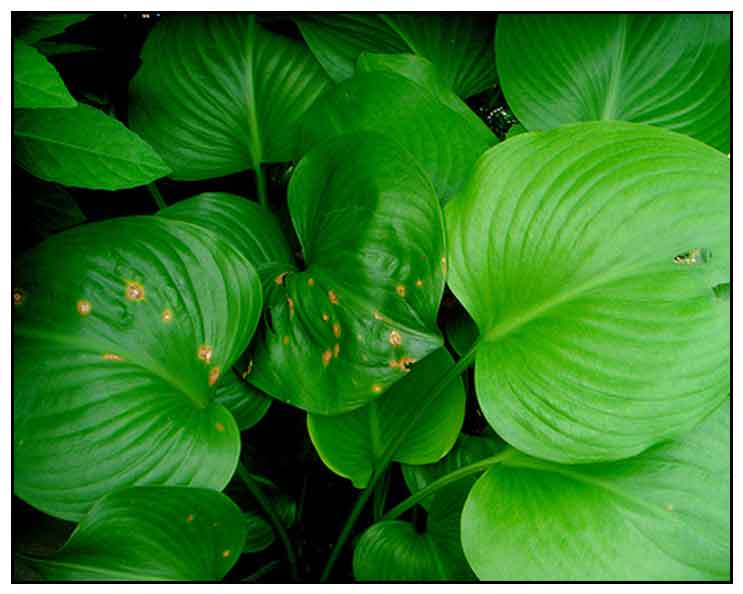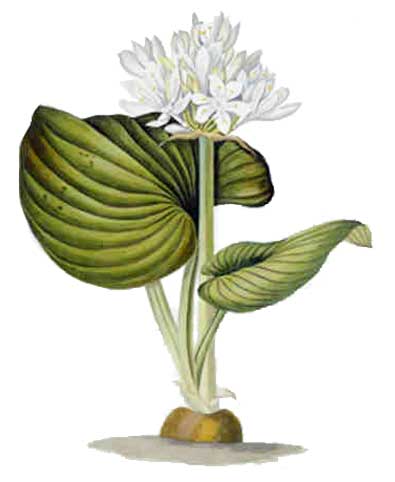
Family • Amaryllidaceae
Tambal
Proiphys amboinensis (L.) Herb.
CARDWELL LILY
| Scientific names | Common names |
| Amaryllis rotundifolia Lam. | Abod (Bis.) |
| Cearia amboinensis (L.) Dumort. | Abur (Bis.) |
| Cepa amboinensis (L.) Kuntze | Dausum (Bis.) |
| Crinum nervosum L'Hér. | Katañgal (Bis.) |
| Eurycles alata Sweet | Katungal (Tag.) |
| Eurycles amboinensis (L.) Lindl. ex Loudon | Katunggal (Tag.) |
| Eurycles autralasica (Ker Gawl.) G.Don | Kosol (Bis.) |
| Eurycles australis Schult. & Schult.f. | Panabor (Bis.) |
| Eurycles javanica M.Roem. | Taliunud, Talionod (Bik.) |
| Eurycles nervosa G.Don. | Talaonor (Bis.) |
| Eurycles nuda Sweet | Tambal (Tag.) |
| Eurycles rotundifolia M.Roem. |
Tanual (Bis.) |
| Eurycles sylvestris Salisb.ex Schult. & Schult.f. |
Brisbane lily (Engl.) |
| Pancratium amboinense L.. | Cardwell lily (Engl.) |
| Pancratium nervifolium Salisb. | Christmas lily (Engl.) |
| Pancratium ovatifolium Stokes. | Northern Christmas lily (Engl.) |
| Proiphys australasica (Ker Gawl.) Herb. | Seashore eurycles (Engl.) |
| Stemonix nervosus (L'Hér.) Raf. | |
| Eurycles amboinensis (L.) Lindl. ex Loudon is a synonym of Proiphys amboinensis (L.) Herb. | |
| Proiphys amboinensis (L.) Herb. is an accepted species. (22 synonyms) KEW: Plants of the World Online | |
| Other vernacular names |
| BORNEO: Bunga si-kudip, Bunga si-kenyang. |
| INDONESIA: Daun sapenoh, Bunga sepenuh. |
| MALAY: Sapenoh. |
| SPANISH: Hojas de potro, Cebollas del monte. |
| THAILAND: Wan nok kum. |
| TONGAN: Lile pilisipeni. |
| OTHERS: Sepulih, Sepuleh, Sepenoti. |
Updated October 2025 / August 2018 / December 2015
![]()
 |
PHOTOS / ILLUSTRATIONS |
| IMAGE SOURCE: Proiphys amboinensis (L.) Herb. / Adaduitokla / Creative Commons Attribution-NonCommercial-ShareAlike / Click on image to go to source page / flickr |
| OTHER IMAGE SOURCE: Pancratium Amboinense / Plate 20 / Priscilla S. Bury's Amaryllis & Lilies / Reproductions of Early 1800's Extremely Rare Botanicals. / Montecito Design |
| OTHER IMAGE SOURCE: Flower / Closeup / Cardwell Lily flower / Plate 20 / John E. Hill / 04:38, 18 February 2007 / CC BY 2.5. / click on image to go to source page / Wikipedia |
| OTHER IMAGE SOURCE: Proiphys amboinensis Bulb / Zimmerpflanzen: Bestimmen & Pflegen / Non-comercial use / Image modified / Click on image or link to go to source page / Zimmerpflanzen |
| Additional
Sources and Suggested Readings (1) Methyl Eugenol: Its Occurrence, Distribution, and Role in Nature, Especially in Relation to Insect Behavior and Pollination / Keng Hong Tan and Ritsuo Nishida / J Insect Sci. 2012; 12: 56. / doi: 10.1673/031.012.5601 (2) Proiphys amboinensis (L.) Herb / Synonyms / KEW: Plants of the World Online (3) Methyl eugenol, a fruit-fly attractant, from the browning leaves of Proiphys amboinensis (amaryllidaceae) / C.H Chuah∗, H.S Yong∗, S.H Goh / Biochemical Systematics and Ecology, Vol 25, Issue 5, July 1997: Pp 391-393 / DOI: 10.1016/S0305-1978(97)00097-5 (4) Antibacterial profile of methanolic extracts from ten local ornamental plants against pathogenic bacteria isolated from aquaculture sites / Ho, Kit Yeng / Undergraduate Final Project Report, 2015 (5) Eurycles amboinensis / Medicinal Plants of China, Korea, and Japan: Bioresources for Tomorrow's ... / Christophe Wiart (6) INCANTATIONS AND HERBAL MEDICINES: ALUNE ETHNOMEDICINAL KNOWLEDGE IN A CONTEXT OF CHANGE / Margaret J. Florey, Xenia Y. Wolff / Journal of Ethnobiology, Summer 1998; 18(1): pp 39-67 (7) Eurycles amboinensis / Christophe Wiart / Medicinal Plants of China, Korea and Japan: Bioresources for Tomorrow's. . . (8) Medicinal Plants of the Subanens in Dumingag, Zamboanga del Sur, Philippines / Lady Jane G. Morilla, Nanette Hope N. Sumaya, Henry I. Rivero and Ma. Reina Suzette B. Madamba / International Conference on Food, Biological and Medical Sciences (FBMS-2014) Jan. 28-29, 2014 Bangkok (Thailand) (9) Proiphys amboinensis / Wikipedia (10) Cardwell Lily / SOCFINDO Conservation (11) Amaryllidaceae (including Hypoxidaceae) / D.J.L. Geerinck Brussels, Belgium) / Flora Malesiana, 1993; 11(2): pp 353-373 (12) Phyto-constituents of the Ethanolic Extracts of the Bulbs of selected genera in the family Amaryllidaceae / AmzWebServices |
• |
DOI: It is not uncommon for links on studies/sources to change. Copying and pasting the information on the search window or using the DOI (if available) will often redirect to the new link page. (Citing and Using a (DOI) Digital Object Identifier) |
| Â Â Â Â Â Â Â Â Â Â Â Â Â Â Â Â Â Â Â Â Â Â Â Â Â Â Â Â Â Â List of Understudied Philippine Medicinal Plants |
| Â Â Â Â Â Â Â Â Â Â Â Â Â Â Â Â Â Â Â Â Â New plant names needed The compilation now numbers over 1,730 medicinal plants. While I believe there are hundreds more that can be added to the collection, they are becoming more difficult to find. If you have a plant to suggest for inclusion, native or introduced, please email the info: scientific name (most helpful), local plant name (if known), any known folkloric medicinal use, and, if possible, a photo. Your help will be greatly appreciated. |
• |
 |

 Gen info
Gen info
 Distribution
Distribution Uses
Uses 